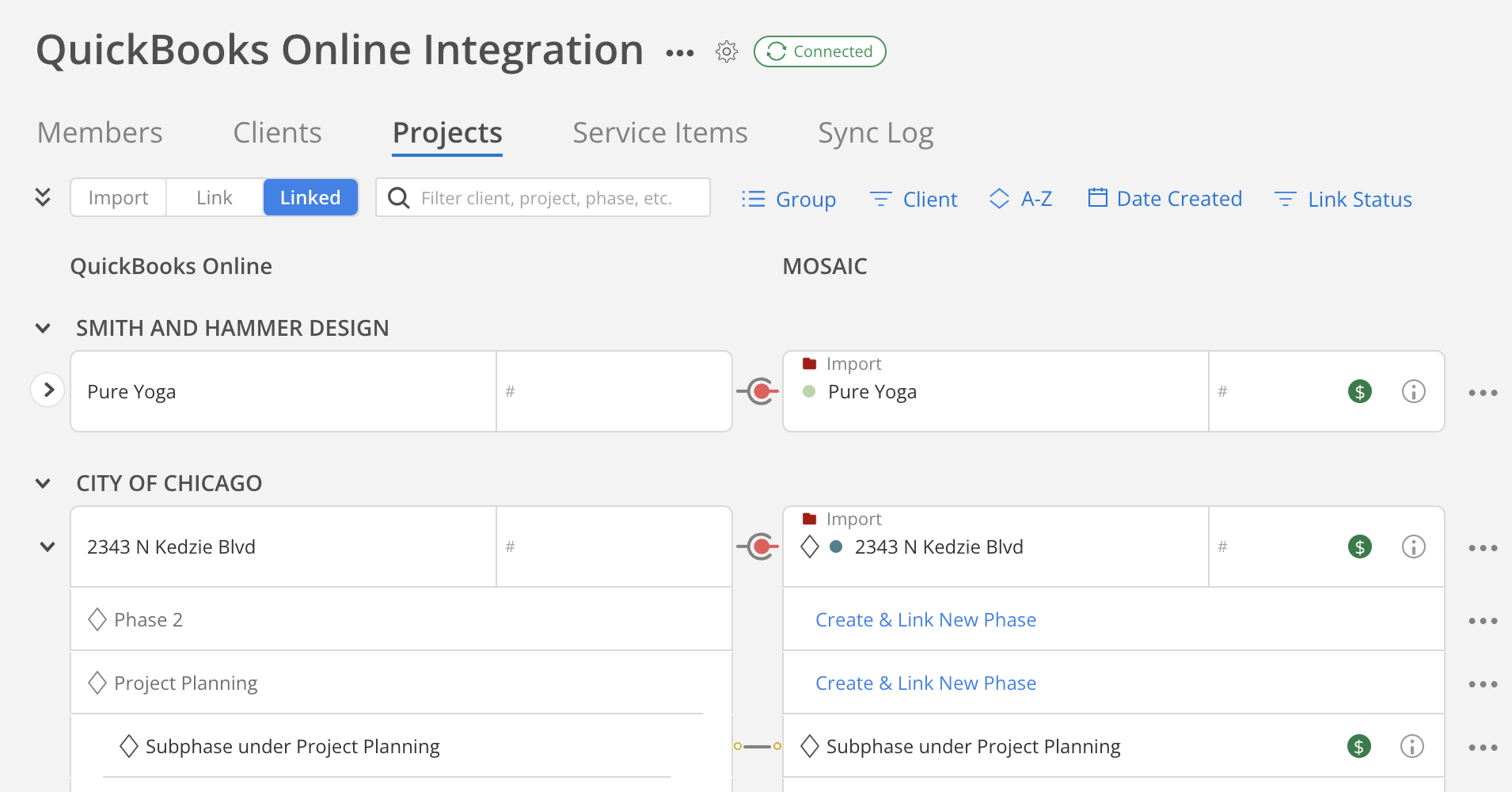Integrations with Subphases Migration Scenarios
This documentation provides guidance on migration scenarios for integrations with subphases in Mosaic. These scenarios cover situations where phases, especially top-level and bottom-level phases, were skipped during the integration setup. We'll explore how to bring them into your Mosaic integration effectively.
Prerequisite:Verify Full Conversion of Linked Work Categories: Confirm that your linked Work Categories have been successfully converted into Subphases before proceeding to import top-level or bottom-level phases.
Scenario 1: Adding Top-Level Phases
Situation:
Top-level phases were skipped during the initial integration setup, and you now wish to include them in your integration.
Example of a project with a top-level phase:
- Project: Mosaic Office
- Top-Level Phase: Internal Renovation
- Subphase: Planning
- Subphase: Structural Analysis
- Subphase: Planning
- Top-Level Phase: Internal Renovation
Solution 1 (Manual Import):
-
Identify Top-Level Phases: Begin by identifying the top-level phases that were originally omitted.
- Navigate to your Mosaic Integration Settings, select your integration, and navigate to the Projects tab. Find the affected Project and Top-Level Phase(s).
-
Add Top-Level Phases:
Within the integration settings, manually import the top-level phases by clicking onCreate & Link New Phaseon the right side of the phase.- Ensure you provide accurate information and mappings.

Solution 2 (Auto Import):
- Identify Top-Level Phases: Begin by identifying the top-level phases that were originally omitted.
- Navigate to your Mosaic Integration Settings, select your integration, and navigate to the Projects tab. Find the affected Project and Top-Level Phase(s).
- Navigate to Integration Settings: Navigate to your Mosaic Integration Settings, within your integration, click on the
Gearicon. - Add Top-Level Phases: Under
Phase Import, selectImport All Phases. This should handle the import of top-level phases automatically.

Scenario 2: Including Bottom-Level Phases
Situation:
Bottom-level phases were initially skipped during integration setup, and you now want to incorporate them into your integration.
Example of a project with a bottom-level phase:
- Project: Mosaic Office
- Phase: Internal Renovation
- Subphase: Planning
- Bottom-Level Subphase: Structural Analysis
- Subphase: Planning
- Phase: Internal Renovation
Solution 1 (Manual Import):
Use the Manual Import Solution if you want to import specific Bottom-Level Phases:
-
Identify Bottom-Level Phases: Start by identifying the bottom-level phases that were omitted in the initial setup.
- Navigate to your Mosaic Integration Settings, select your integration, and navigate to the Projects tab. Identify the Project and its affected Bottom-Level Phase(s).
-
Add Bottom-Level Phases: Within the
Integration Settings > Projectstab, manually import the bottom-level phases by clicking onCreate & Link New Phaseon the right side of the phase.- Ensure you provide accurate information and mappings.

Solution 2 (Auto Import):
Use the Auto Import Solution if you want to import all unlinked Bottom-Level Phases:
- Identify Bottom-Level Phases: Begin by identifying the Bottom-Level Phases that were originally omitted.
- Navigate to your Mosaic Integration Settings, select your integration, and navigate to the Projects tab. Find the affected Project and Bottom-Level Phase(s).
- Navigate to Integration Settings: Navigate to your Mosaic Integration Settings, within your integration, click on the
Gearicon. - Add Bottom-Level Phases: Under
Phase Import, selectImport All Phases. This should handle the import of bottom-level phases automatically.

Integration with Subphases Monitoring Guide
Verify Imported Data:After adjusting the mappings, verify that the integration accurately includes the top-level phases, and that time entries are correctly attributed to them by visiting the Project Budget modal.
These scenarios provide guidance on addressing integration migration scenarios where phases were skipped or not included initially. By following these steps, you can ensure that your Mosaic integration is comprehensive and aligned with your source application's data structure.
Updated 2 months ago
